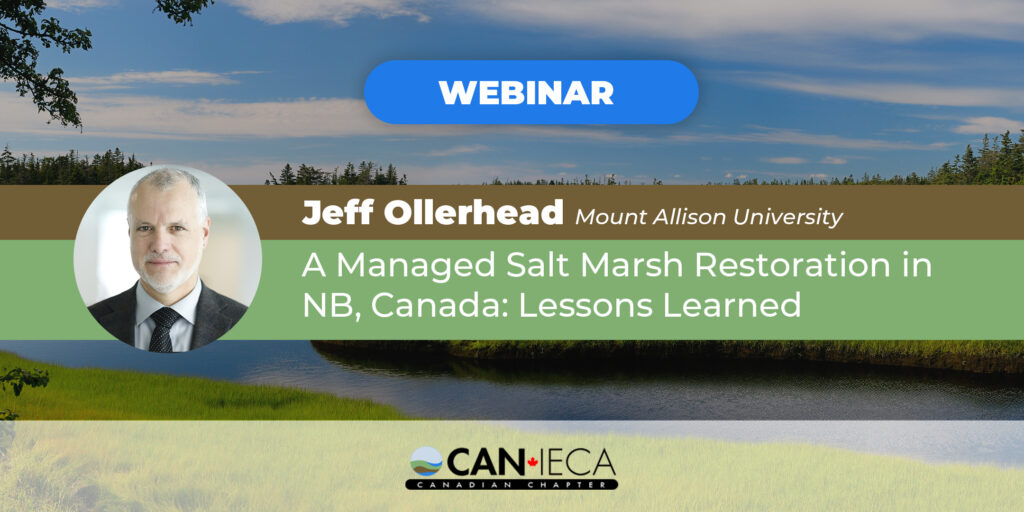
In Maritime Canada, there is significant opportunity to conserve salt marshes, to preserve accommodation space into which salt marshes can migrate, and to undertake salt marsh restoration projects. Restorations are undertaken to regain the intrinsic environmental benefits offered by salt marshes (e.g., fish habitat), to gain nature-based (natural) protection for coastal infrastructure, including erosion control, and increasingly to sequester organic carbon compounds.
A case study from a restoration project at Musquash, NB, serves to illustrate the important points. A dyke (abandoned railway bed) was removed in 2005 to allow salt water to once again flood an area of agricultural land that was reclaimed salt marsh. Prior to 2005, there was very limited hydrologic connectivity between the site and the macrotidal Musquash Estuary. Most of the vegetation was terrestrial.
Since dyke removal, the hydrologic connections have restored and the site is regularly flooded with sea water. Sediment has been deposited at a rate of 9.8 ± 4.0 mm/a, a rate greater than the estimated rate of relative sea level rise of 8.5 ± 3.5 mm/a (2010-2030). Mean total carbon stock sequestered for the site was 51.9 Mg/ha. These values compare well to, and are higher than, values measured at other Bay of Fundy sites. In summary, important salt marsh ecosystem services have been restored, sediment is being trapped, nature-based protection is being provided for the adjacent highway, and carbon is being sequestered.
